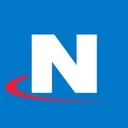Why I Use M1 Finance (Even Though it Doesn’t Score the Highest)
I went from testing M1 Finance for work to using it in my personal investing thanks to one key feature.

Many, or all, of the products featured on this page are from our advertising partners who compensate us when you take certain actions on our website or click to take an action on their website. However, this does not influence our evaluations. Our opinions are our own. Here is a list of our partners and here's how we make money.
The investing information provided on this page is for educational purposes only. NerdWallet, Inc. does not offer advisory or brokerage services, nor does it recommend or advise investors to buy or sell particular stocks, securities or other investments.
Sometimes, a number doesn’t tell the whole story. Officially, NerdWallet’s rating for M1 Finance, an investing and money management app, is a 3.9 out of 5 stars, which puts it toward the bottom of the list among all brokers we review.
But M1 deserves a look from a different angle. Because the features that pull down M1’s official score are the same ones that compelled me to keep using it after the testing was over.
How I got here
I test a lot of investing apps for NerdWallet. I currently have around two dozen such apps on my phone and one desktop platform. But I only use a handful of these for my personal investing: two large institutions for my retirement savings, Robinhood for dabbling in active trading, and Coinbase for holding cryptocurrency.
That sounds like just about all you’d need. But when I tested M1 for the first time in 2023 and saw how easy it was to create my own custom portfolio of individual stocks and ETFs, I decided there was a place for that in my long-term investment strategy.
What’s the big deal about custom portfolios?
Building a portfolio of individual stocks at most brokers takes a lot of work, and it only gets harder from there as you try to maintain it. But M1’s “pies” and “slices” features made this easy. Here’s how it works:
Create a pie, which is just a portfolio.
Add slices to it by selecting the stocks or ETFs you want included.
Set each security’s weight in the portfolio. This can be done in 1 percentage point increments.
Create an automated contribution schedule, such as $100 per month (though you can set just about any cadence).
Each contribution will automatically be distributed and invested according to the allocation you set.
And as for maintaining it, M1 clearly shows you how far out of alignment each component is based on the allocation you set. If one component drifts above its allocation and another drifts below it, the next contribution will be distributed to get your portfolio closer to alignment — that is, more of your contribution will go toward the underweight asset.
And if things drift too far and you want to take immediate action, click “rebalance” and M1 will sell overweight assets to purchase underweight assets. You’ll be given a warning that this triggers a taxable event, which I appreciate.
In many ways, the custom portfolio feature operates kind of like a robo-advisor, but instead of letting the algorithm do its work behind the curtain, you get to tell the robot what to do.
I’ve used this feature in two ways. The first was to create a portfolio of what I believe are companies that stand to help the world navigate a changing climate. I couldn’t find an ETF that matched exactly what I was after, so I just made my own (of sorts).
The second pie was an experiment in mirroring the returns of the S&P 500 while excluding companies I thought were way overvalued or I just didn’t want exposure to.
Brokerage firms | |
|---|---|
The specifics and fees
M1 lets you add up to 100 stocks or ETFs into a single pie, and allocations must be set in 1 percentage point increments. If there were a simple way to increase the limit of stocks and ETFs you can have in a pie (you can do it, but it’s cumbersome), and have more flexibility with the asset allocation (say, if they could be set to the tenth), I’d be truly blown away.
If you’ve created multiple pies, you can then set an allocation for each pie. Here’s an example of how that works:
You contribute $100 to your portfolio.
You have two pies — one is weighted 40% in your portfolio, the other 60%.
Each pie has 5 stocks, all weighted 20%.
The first pie will get $40, and the other gets $60.
$8 gets invested into each stock in pie one, and $12 gets invested into each stock in pie two.
You do have to pay a $3 per month platform fee, but this is waived if you reach $10,000 or more in assets at least once in the billing cycle.
Which factors lower M1’s score?
Our rubric aims to award well-rounded brokerages that do it all. So, by design, niche investing apps may not receive a relatively high score. In our most recent review, M1 scored low for its investment selection (only stocks, ETFs and crypto), trading platform, and research and data.
But here’s why that doesn’t matter to me: Since I’m building long-term portfolios to complement existing retirement portfolios, I’m only interested in equities. So M1’s minimal investment selection is fine.
And its low trading platform score factors in things like trading hours, which M1 essentially doesn’t have. Instead, it provides two trading windows per day, which, for the purposes of this investment account, is totally fine. I appreciate M1’s commitment to encouraging long-term investing by forcing this, and I imagine it also keeps their overhead down. Win-win.
As for research and data, remember I have dozens of stock apps on my phone. Research and data is not hard to come by (though, as you might imagine, I detest inactivity fees).
Brokerage firms | |
|---|---|
Products that could rival M1’s Pies
I like M1’s custom portfolio feature the best, but it’s not the only platform that offers it. Here are a few others:
Fidelity Basket Portfolios: For an additional $4.99 per month, Fidelity users can create a basket of up to 50 stocks and ETFs. Unlike M1, there’s no way to waive that fee. Read our review of Fidelity.
Public Investment Plans: Public’s version of this allows up to 20 stocks and ETFs, but it’s the only one I’ve found that lets you mix crypto into your portfolio, too. However, pricing is a little off-putting at $0.49 to $1.99 per recurring investment. Investment Plans are included in a Public Premium membership, though, which is $10 per month or $8 per month if paid annually. Read our review of Public.
Charles Schwab Investing Themes: You can’t build one from scratch, but you can start with a pre-built portfolio of 25 stocks, and then customize its components from there. And it’s free. Read our review of Charles Schwab.
Webull Wefolios: Wefolios can hold up to 30 stocks, and the feature is free. While this sounds like a compelling offer, it’s not my preferred platform. It’s been very buggy and confusing to use every time I test it. (Though it does appear Webull has been working to improve it in the last year.) Read our review of Webull.
I’ll also mention that power users can streamline custom portfolio building and maintenance through Interactive Brokers’ BasketTrader, but be warned: This is not easy to use, and I wouldn’t recommend it for that purpose.
» Need a new brokerage account? Here's our full list of the best brokers from this year's analysis.





